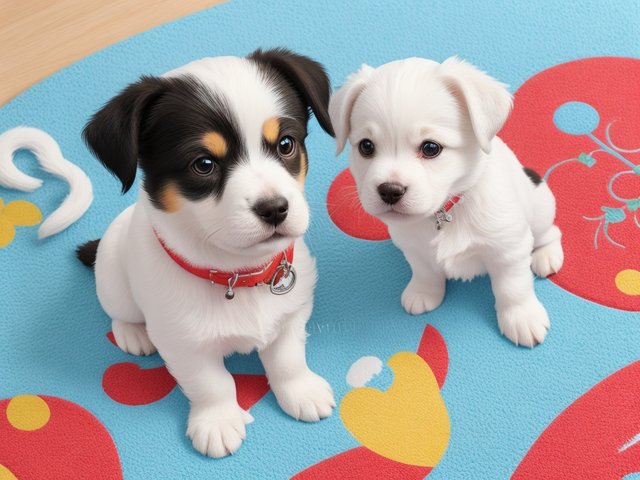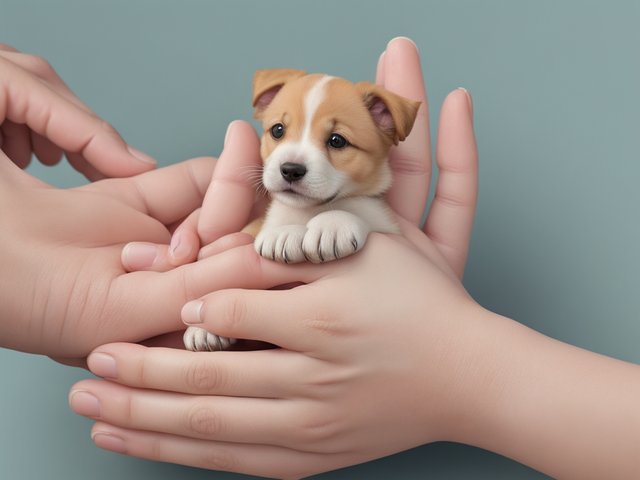How to Train a Puppy to Sit

Introduction:
n a Puppy to SitBringing home a new puppy is an exciting time, but it's essential to start their training early. Teaching your furry friend basic commands, such as "sit," sets the foundation for a well-behaved and obedient four-legged companion. In this article, we will dive into the step-by-step process of training a puppy to sit, along with some helpful tips and tricks to make the training experience enjoyable for both you and your adorable pup.
Body:

Step 1: Choose the Right Time to Train
Puppies, just like us, have their moments of calmness and excitement. It is crucial to select a serene environment where your puppy feels relaxed and focused. Training sessions during quieter times of the day, like after a nap or mealtime, can be ideal. This enhanced receptiveness will encourage faster learning and better concentration.
Step 2: Get Your Puppy's Attention
To successfully initiate the training session, you need to grab your puppy's attention. You can achieve this by enticing them with a tasty treat, a favorite toy, or even using your voice in an animated and engaging manner. Remember, when training your puppy, a friendly and warm demeanor goes a long way in building trust and enhancing responsiveness.
Step 3: Teach the "Sit" Command
Now comes the moment to introduce the "sit" command to your curious pup. Stand in front of them, holding a treat above their head, slightly out of reach. As you do this, say the command "sit" in a clear and confident tone. Begin to move the treat slowly towards their tail, just above their nose. Gently guide their backend down while their head rises to follow the treat. This motion will ultimately lead them into a seated position. Be patient during this process, as it may take a few attempts for your puppy to perfect the maneuver.
Step 4: Reward Your Puppy
Once your puppy is sitting comfortably, it's essential to reward them immediately with praise, a delicious treat, or a thrilling game with their favorite toy. This positive reinforcement will reinforce that sitting is a desirable behavior and encourage them to repeat the action in the future.
Repeat Steps 2-4 for Consistency
Consistency is key when it comes to training a puppy. Repeat steps 2-4 frequently, ensuring your furry friend understands the correlation between the command and the desired action. Gradually reduce the use of treats and rely more on verbal praise to reinforce the behavior. Remember, patience is a virtue; every puppy learns at their own pace, so don't get discouraged if progress seems slow.
Adding Distractions
Once your puppy has mastered sitting, you can gradually introduce distractions to their training routine. For example, you can practice sitting commands in a different room, with other people present, or even with other animals around. This will help your puppy generalize the command and understand that they should sit regardless of the environment.
Tips:

Use high-value treats that your puppy finds irresistible. This will serve as a powerful motivation during training sessions.
Patience is key! Puppies are learning new skills, so don't get frustrated if they don't grasp it immediately. Keep practicing and stay positive.
Consistently reward your puppy every time they successfully perform the sit command, even if it's just for a split second. This repetition will reinforce the behavior and create a strong association.
Never give up on your puppy. Training takes time and dedication, but the end result of a well-trained pup is worth the effort.
Conclusion:
Training your puppy to sit is an essential command that provides a solid foundation for their overall obedience. By following the step-by-step process outlined in this article and implementing the helpful tips and tricks, you will be well on your way to success. Remember to be patient, consistent, and most importantly, to make the training experience enjoyable for both you and your furry friend.
FAQ:
Q: How do I get my puppy to start listening to me?
A: Building a strong bond with your puppy is key to gaining their attention and cooperation. Spend quality time with them, engage in interactive play sessions, and always use positive reinforcement during training. Your puppy will begin to view you as their trusted leader, creating a strong foundation for effective communication.
Q: What are some common mistakes to avoid when training a puppy?
A: One common mistake is becoming impatient or using harsh punishments during training. This may cause your puppy to become fearful and hinder their learning process. Additionally, inconsistency in commands or rewarding behaviors that you do not wish to reinforce can lead to confusion. Focus on positive reinforcement, consistency, and maintaining a calm and friendly atmosphere during training sessions.
Q: How long does it take to train a puppy?
A: The time it takes to train a puppy can vary greatly depending on the individual dog, their breed, and their age. Some puppies may catch on to the "sit" command within a few days, while others may require several weeks of consistent training. Remember, each puppy has their own unique learning pace, so it's important to be patient and persistent.
Q: What are some tips for training a puppy in a multi-dog household?
A: When training a puppy in a multi-dog household, it's vital to provide individual attention to each dog during training sessions. Separate the dogs during training to minimize distractions and ensure clear communication. Additionally, use positive reinforcement and rewards tailored to each dog's preferences to maintain motivation and engagement.
Q: How can I prevent my puppy from chewing on furniture?
A: Chewing is a natural behavior for puppies, especially during their teething phase. To prevent them from chewing on furniture, provide them with appropriate chew toys specifically designed for teething puppies. Ensure these toys are readily available and rotate them regularly to keep your puppy engaged. Also, puppy-proof your home by keeping valuable or dangerous items out of reach, limiting access to furniture-rich areas, and using taste deterrent sprays on items you want to protect.